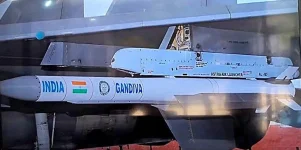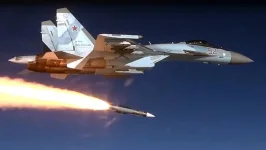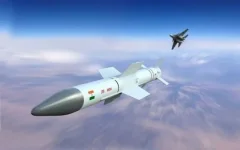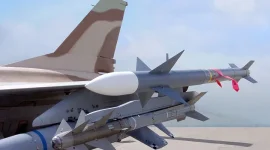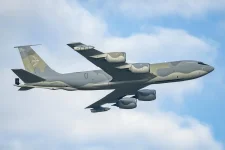- Views: 2K
- Replies: 8
India's Defence Research and Development Organisation (DRDO) has achieved a significant breakthrough in its development of the Astra MkIII Beyond Visual Range Air-to-Air Missile (BVRAAM).
The Solid Fuel Ducted Ramjet (SFDR) propulsion system, designed to power the advanced missile, has successfully completed ground-based testing. This accomplishment marks a critical step towards enhancing India's air defence capabilities.
However, the transition from ground testing to aerial trials is expected to be a complex and time-consuming process. Integrating the Astra MkIII with various fighter aircraft and ensuring compatibility with their respective radar systems presents a considerable challenge.
This is particularly crucial given the missile's extended range, designed to engage targets beyond 300km for strategic assets like AWACS and in-flight refueling aircraft, and over 200km for conventional fighter jets.
The integration process requires meticulous testing to ensure seamless communication between the missile and the aircraft's avionics, especially the radar system responsible for tracking and guiding the missile over such long distances. Achieving precision at these extended ranges necessitates a series of developmental trials, which are inherently complex and demanding.
An Indian Air Force (IAF) official has indicated that the Astra MkIII is not anticipated to enter service until 2031. This timeline reflects the extensive testing and validation required to guarantee the missile's reliability and effectiveness in real-world combat scenarios.
The Astra MkIII is a cornerstone of India's evolving air defence strategy, aimed at providing the IAF with the capability to neutralize high-value, long-range aerial threats. The missile's advanced propulsion system and extended reach are intended to act as force multipliers, bolstering the survivability and operational range of Indian aircraft in contested airspace.
As the project advances, DRDO is poised to conduct a series of flight tests that will progressively build confidence in the missile's performance. Each test phase will rigorously evaluate different aspects of the missile's operation, encompassing launch, guidance, and terminal phase engagement. The delay in service entry underscores the meticulous approach necessary to develop and deploy such sophisticated defence technology.

